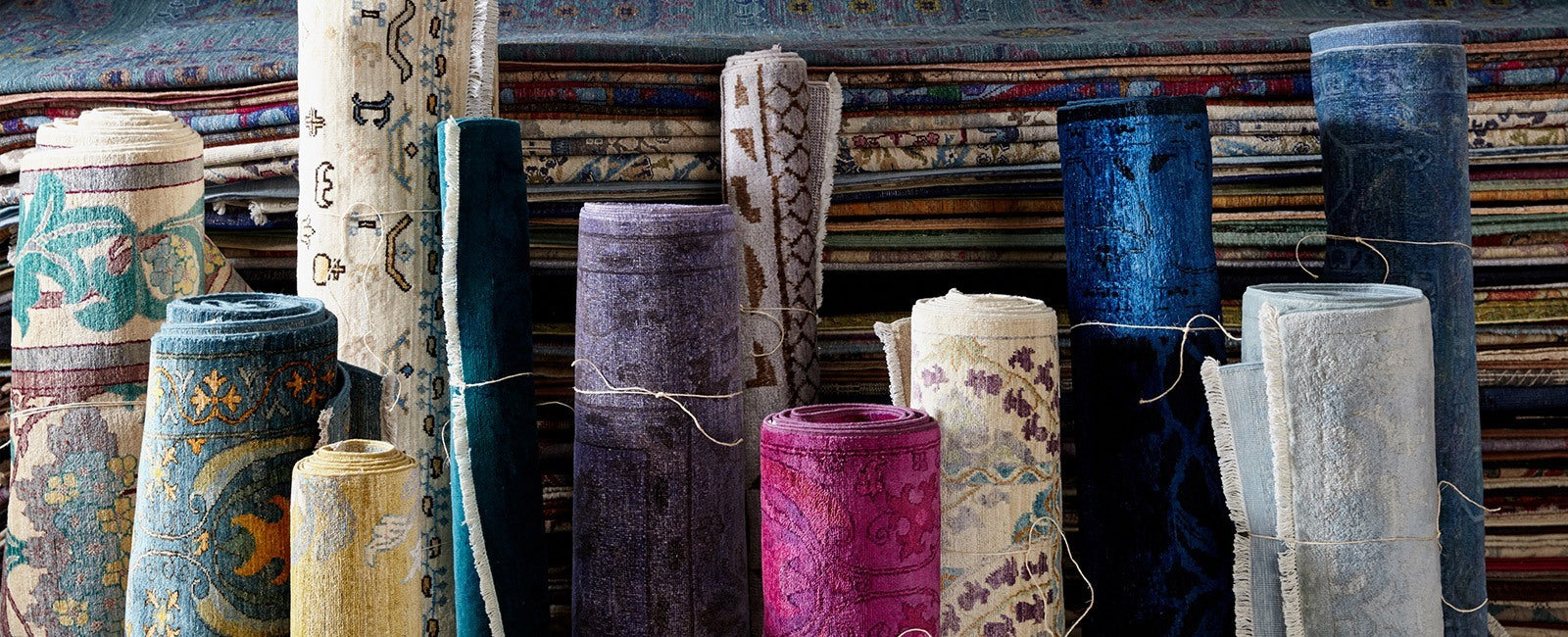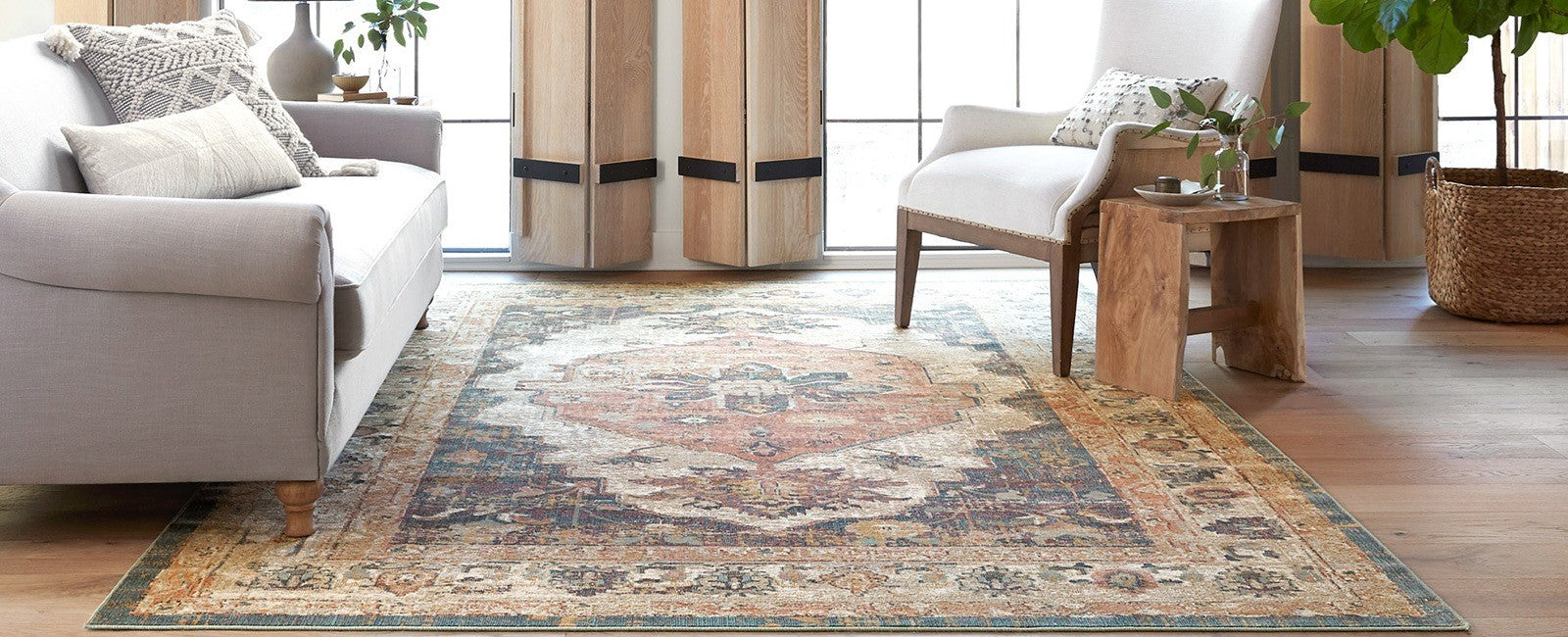Your Cart is Empty
0
Your Cart is Empty
No matter the era, and no matter the current trends in modern designs, there is a timeless, enduring quality to Middle Eastern patterns that continues to inspire. These beautiful patterns, which often shift between complex, beautifully layered variations of diamonds and octagons, seem as though they tell a story in some secret language, chronicling the days of the desert kingdoms and the Arabian sheiks. There’s an air of majesty in Middle Eastern rugs that has allowed them to stand the test of time.
With these timeless patterns, you can also add that same majestic flair into your own design. The myriad of colors, variations, fabrics, and textures that compose the Afghan, Pakistani, and Oriental style rugs have something for every taste and preference.
But as with every other aspect of design, there are certain things that work, and certain things that won’t. Randomly adding a Middle Eastern design into your scheme, without giving any thought to the other aspects, will leave you with a rug that looks beautiful on its own, but clashes with your other design elements. To help you find the perfect Middle Eastern pattern to incorporate in your design, consider the following tips before you buy.

Before you begin to consider which Middle Eastern pattern you want to incorporate, you need to understand the sorts of emotions and feeling that these rugs convey. It’s easy to say that a rug or pattern is beautiful and majestic, but what makes it so? When it comes to Middle Eastern patterns, there are two distinct characteristics that tend to emerge:
1. Complexity
The patterns in Middle Eastern designs are anything but simple. These are complex, intricate affairs that may use a simple shape, like a diamond or octagon, as their foundation, but they vary them to the point that they achieve a very high degree of sophistication and intricacy.
This meticulous attention to detail can foster in us feelings of inspiration, wonder, and admiration. We look at these patterns and we can already perceive just how much work and care must have gone into bringing them to life. When humans encounter something so richly detailed, we can’t help but take the time to admire and appreciate the skill it took to realize.
2. Structure
For all their intricacy, Middle Eastern patterns are very ordered, structured affairs. The lines and contours are of course very beautiful and elegant, but they’re also carefully organized. The shapes used in Middle Eastern patterns tend to parallel each other, or feed into each other, perfectly. These shapes are not chaotic, and they don’t veer “off course” or appear randomly thrown together.
This clearly organized layout can give us a sense of comfort and security. When people see patterns that are very clearly aligned, we get the impression that a calm, rational mind, with masterful skill, agonized over the design until every aspect was in its proper place. That attention to structure, in turn, makes us feel more secure in the knowledge that everything has a place in the world, including us.
From these two major characteristics, you can perceive that there are three primary feelings, or emotions, that you can use a Middle Eastern Pattern to convey - admiration, engagement, and security.

Before you start looking for the perfect Middle Eastern pattern, you already need to have established both the purpose and theme of the room you want your rug to adorn. Without a clear sense of the emotions that you want to convey, and without understanding what you need your pieces to achieve, you’ll risk making a purchase that looks absolutely amazing when you look at it on its own, but neither serves to achieve the purpose of your room, nor looks good in an ensemble.
We’ve established that Middle Eastern patterns are majestic, but highly intricate and organized affairs. With that in mind, they can serve very well in settings where the theme is all about giving a sense of prestige or elegance, in more complex designs that incorporate other intricate pieces, and in spaces where passion, engagement, and energy are critical.
As a caution, be aware that a Middle Eastern pattern may not be a good fit in design themes where simplicity and disengagement are your most important factors. These patterns are very beautiful, but that beauty demands both your attention and concentration. In a room where you want to be able to empty your mind, and feel completely at ease, such as in your bedroom, Middle Eastern patterns run the risk of triggering sensory overload, which you want to avoid. This holds true for any room where you want both you and your guests to be able to completely unwind and disconnect from the world.
While there are many variations in Middle Eastern patterns, the colors tend to be much more focused on those that you might find in the desert countries from which they originated. Red is by far the most prominently used color, conveying both the extreme heat of the sun and sand, and the inexhaustible passion of these noble people. Gold or desert tan is the second most commonly used, often tying in with red, to give a natural, subdued feeling. Finally, blue is used to accent the reds and golds that dominate rugs with Middle Eastern patterns, using the color of the clear sky to suggest hopefulness and infinite possibilities, the same feelings you get when you look off into the unending horizon.
These three hues form a triadic color scheme, with the reds, blues, and golds all working together to create a palette that is beautiful and elegant. Using some basic color theory, we can begin to construct some ideas about how to incorporate these dominant hues into our design. From a complimentary standpoint, you could use shades of green to highlight the dominant reds, while also mixing well with the blues and golds. Alternately you could tie in purple, which will naturally feed into the blues and reds, since those two colors form purple when mixed. Orange could work in the same way.
Bear in mind: colors must not only look pleasing visually, but need to support the tone or feeling you want to convey in your theme.
Now that we’ve established what gives these patterns their majestic, timeless quality, and have some suggested color schemes that work best, we need to consider how to best incorporate them into a design. There are several different ways you could go about this, and many instances where these patterns will be extremely effective, depending on what you want to achieve:
We talked earlier about how Middle Eastern designs have an unerring sense of order about them and are meticulously organized. Because of this quality, you can use the pattern of your rug as a design centerpiece.
By placing your pattern at the heart of your layout, you’ll have a much better sense of how to align and structure your room’s layout. Since these patterns will naturally draw the eye, arrange your other pieces in a way that orients your guests to the pattern. Since most Middle Eastern patterns also tend to indicate a clear direction, you can use this to further direct your viewers’ attention to another element in your room you want to highlight.
Even if you’re not intending to use these patterns as the primary showcase of your room, they are still extremely useful for accenting feelings of passion and energy, which can be invaluable for rooms where activity abounds. A perfect example is an in-home office, where discipline, attention to detail, and focus are paramount. Subconsciously, these intricate patterns will encourage you to work harder, and see your task through to the end, as you’re inspired by the craftsmanship displayed in the pattern.
Considering the inherent beauty and elegance of these patterns, they very much qualify as works of art in their own right. A unique way to use that artistic quality is to utilize your Middle Eastern rug as a piece of wall art. Not only is this uncommon in most homes, that will lend a personalized touch to your design, but it allows your viewers to fully appreciate the design, unencumbered by sofas, chairs, or any other piece that hides any part of the pattern.
There is no denying that middle eastern patterns can be a beautiful and empowering addition to your home, so long as you take time to consider the big picture.